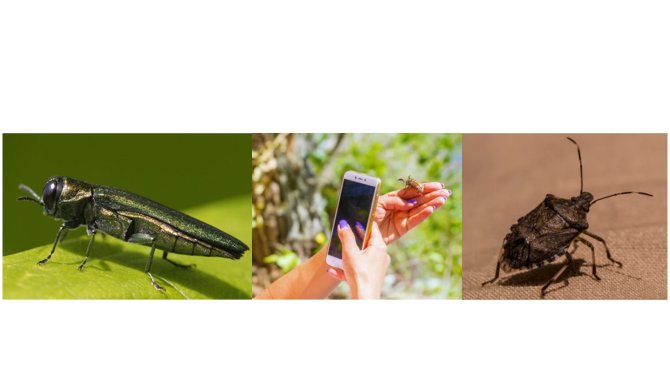
Project
Using citizen science in pest surveillance
Every year, plant pest surveys are carried out by national plant protection organisations in the EU to monitor the presence and spread of unwanted species. It is essential that the most updated and complete information is gathered. Many volunteer initiatives (called ‘citizen science’) in the EU gather such information, which can contribute significantly to the EU’s knowledge on pest presence and distribution. This project’s goal is to develop a methodology that quantifies how much citizen science data can contribute to the survey effort of the national plant protections organizations.
Background
Plant pests pose a serious threat to the EU’s food and plant safety. For example, the introduction of Agrilus planipennis, the emerald ash borer, into the EU could have devastating consequences for the population of ash trees on the continent. When a pest first enters a territory, chances are high that it can still be eradicated, but as soon as the pest has a stable and large enough population in an area and is thus ‘established’, eradication becomes nearly impossible. Therefore, it is crucial to detect a new pest as early as possible and continuously monitor the presence and/or distribution of a pest to ensure it doesn’t spread to new areas.
Member states of the EU are required to conduct official pest detection surveys every year to detect such dangerous pests as early as possible, but naturally these efforts are costly and never exhaustive. At the same time, large scale citizen science projects exist in the EU that collect large amounts of data about the presence and distribution of many pest species and other species. This data has not been used until now because it poses some challenges: volunteers may not detect species as accurately as professionals, and certain locations are more popular to visit than others. Nonetheless, citizen science databases could be a valuable source of information and could contribute significantly to the EU’s knowledge of pest presence.
Project description
In this project, the main task is to develop a statistical methodology for the integration of citizen science data into official plant pest surveys. The focus is on insect plant pests such as the emerald ash borer or the Japanese beetle (Popillia japonica). The project is divided up into three phases: data collection, methodology development and development of concrete steps to integrate the data into official tools.
First, a database of all relevant citizen science initiatives will be composed. This will contain all relevant information about the projects, such as the species targeted, the amount of volunteers involved, how well these volunteers were trained, and more.
Afterwards, we will develop the statistical methodology needed to homogenize citizen science data and official survey data. Citizen science data is biased in space and time, therefore we need to account for the spatial sampling bias that is often inherent to citizen science data. Apart from that, some pests are hard to detect or only detectable by trapping, which doesn’t happen often in citizen science projects. Therefore, it is likely that citizen scientists have a lower probability of detecting a pest when it is present. We will select a few pilot pests for which we will quantify the actual detection probability of citizens and investigate what other factors are important in determining its potential contribution.
The last phase involves the development of concrete steps to use the citizen science data. For the same pilot pests as in phase 2, we will consider how many citizen science samples are needed to replace one official survey sample. With this, we can determine how much EU member states can lower their survey effort to achieve the same confidence that a pest is absent, and we can determine how much the confidence of pest absence increases when citizen science data is added to the official survey data. Countries in the EU can make use of a specific statistical survey design tool called RiBESS+, which allows them to calculate the needed sample size to determine pest absence in an area. For the pilot pests, we will also design a methodology of how the data can be added to this tool specifically.
After these phases have been completed, we hope to have a more concrete view of the benefits of citizen science data in pest surveillance and which factors may influence citizen science’s contribution. Additionally, we will provide concrete examples of combining citizen science data with official survey data for three different pests.
